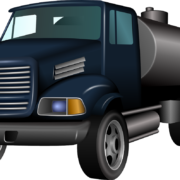Overboard Discharge Services In Maine Today
Septic Preservation Services has Overboard Discharge Services and Repairs scheduled today in Tenants Harbor, Friendship, Bremen, Owl’s Head, Islesboro and Union ME. For more information regarding OBDs see Maine Gov
These are a few general tips that will help to extend the life of your OBD and promote high quality effluent.
- Some household chemicals kill the microorganisms that digest the wastes in your treatment system and may pass through to the receiving waterbody. Toxic chemicals, harsh cleaners, paint, pharmaceuticals, and non-biodegradable materials should not be disposed of by dumping or pouring down the drain.
- Using low-flow toilets and water-saving showerheads will prolong the life of your system.
- Septic tanks should be pumped at least once every three years. Depending on how much the OBD facility is used, you may want to increase the septic pumping frequency or decrease it to once every five years if it receives very little use.
- Trees, shrubs and woody perennials should be cleared away from system components. Sandfilter surfaces should be mowed at least once per year. If a wet spot appears on or near the sandfilter bed notify the DEP inspector.
- Mechanical systems operate best if they are used at a consistent rate and may malfunction or produce poor quality effluent if overloaded on the weekend and “starved” during the week. Try to manage laundry, cleaning, and showers so that the load is spread out as evenly as possible. Leave a mechanical OBD operating as recommended by your service contractor at all times during the season of use.
- Check the chlorine level at least every two weeks and keep fresh chlorine in contact with the treated wastewater. Don’t overfill the chlorinator tubes; only the bottom two or three inches of the tubes should have chlorine. Old, brown or mushy chlorine does not properly disinfect and must be replaced. Take care to remove old chlorine from your chlorinator rather than washing it out to the waterbody.
- Ensure that the outfall pipe extends to below the low water mark of the receiving waterbody. In extenuating circumstances a specific waiver to this requirement may be granted by the Department.
- Treated wastewater should be clear and without a strong septic or chlorine odor. If wastewater in the disinfection unit is not nearly clear, smells like rotten eggs, raw sewage, or smells strongly of chlorine, call your service contractor or notify the DEP inspector.
If you require an Overboard Discharge Service or Repair you will need to contact a certified maintenance contractor. Septic Preservation Services is the only Statewide contractor on the Maine Department of Environmental Protection Wastewater Treatment Plants certified maintenance contractors list. If you wish to make an appointment or if you have any questions about our Overboard Discharge Services please do contact our office on 877-378-4279 or visit Septic Preservation Services

















 Low-flow toilets are a great way to reduce the amount of wastewater that ends up in a septic system. If you live in an area that relies on private septic systems, as opposed to a municipal sewer system, it is important to do everything you can to reduce water usage to prevent expensive damage to the septic system.
Low-flow toilets are a great way to reduce the amount of wastewater that ends up in a septic system. If you live in an area that relies on private septic systems, as opposed to a municipal sewer system, it is important to do everything you can to reduce water usage to prevent expensive damage to the septic system.

